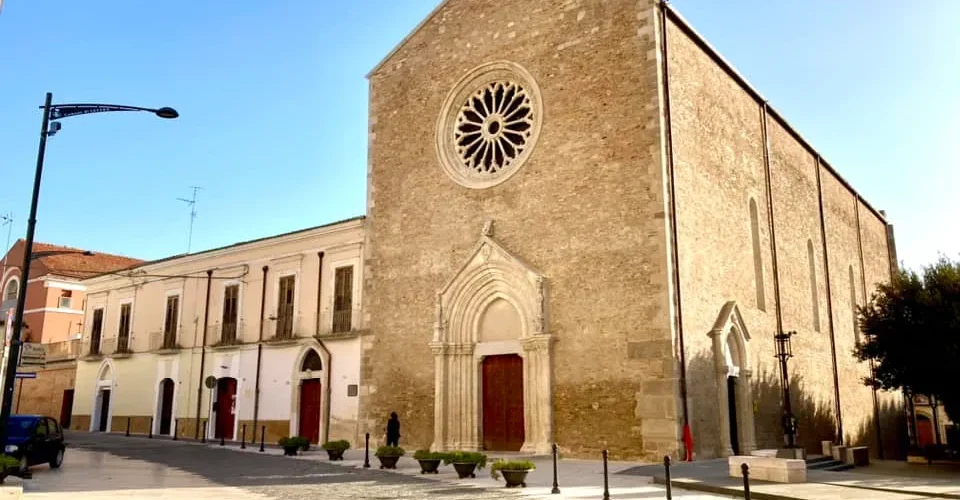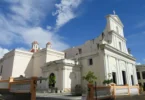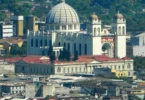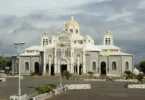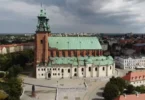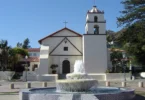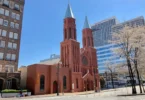Introduction
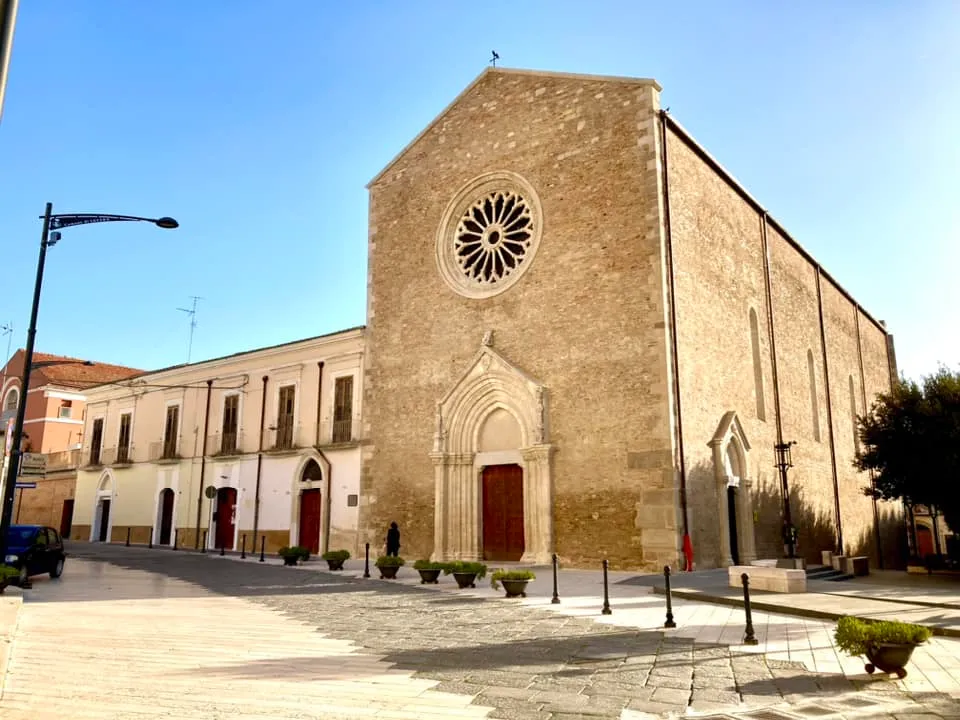
The Church of San Francesco d’Assisi in Lucera, located in the heart of the city’s historic center at Piazza Tribunali, stands as one of the most important Catholic places of worship in the region. Rich in spiritual and historical significance, it has long been a focal point for devotion, particularly to Saint Francesco Antonio Fasani, a native of Lucera and a deeply venerated Franciscan friar. In 2001, the church was officially designated as the Diocesan Sanctuary of San Francesco Antonio Fasani, in recognition of its role as the resting place of the saint’s body. Every year, thousands of pilgrims and faithful journey to the sanctuary to venerate the remains of the beloved “Padre Maestro” at his altar. Further emphasizing its cultural and spiritual value, in 2008 the sanctuary received the title of “Monument Witness to a Culture of Peace”, highlighting its message of reconciliation and faith. This recognition culminated on 11 May 2012, when the church was elevated to the prestigious status of Minor Basilica, marking a significant milestone in its religious and communal life.
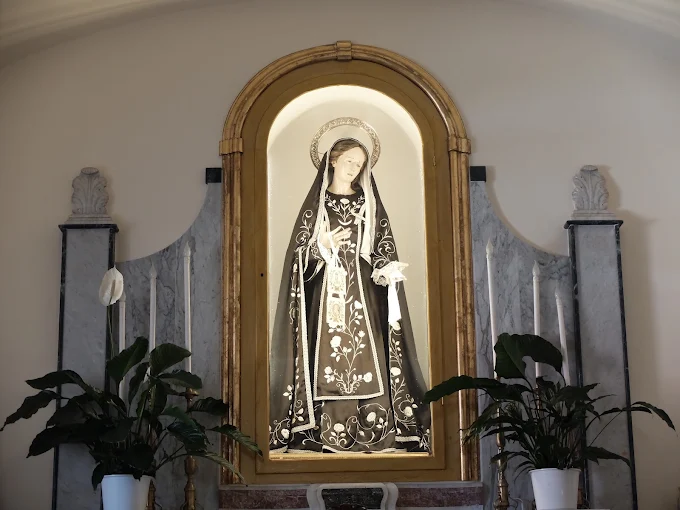
Historical Foundations and Angevin Restoration (1300–1312)
Following the suppression of the Saracen colony in 1300 by Charles II of Anjou, the city of Lucera underwent a significant religious transformation. Christianity was restored as the dominant faith, and several major ecclesiastical structures were erected to mark this revival. Among them were the new cathedral in Gothic-Angevin style and the Church of San Francesco d’Assisi, which was entrusted to the Conventual Friars Minor. Construction of the church began in 1304 and was completed by 1312, laying the foundation for its role as a vital center of Catholic worship in the city.
The Life and Legacy of Padre Maestro (1681–1742)
Between the 17th and 18th centuries, the church gained prominence as the spiritual home of Francesco Antonio Fasani, a Franciscan friar born in Lucera on August 6, 1681. Known affectionately by the people as “Padre Maestro”, Fasani was revered for his deep devotion to the Immaculate Virgin, his charitable works, and his service to the poor and sick. He founded a soup kitchen supported by donations from local noble families such as the Zunica, de Nicastri, Ramamondi, and Lombardi. Fasani also commissioned statues of the Immaculate Virgin and Saint Francis from sculptor Giacomo Colombo, both of which remain preserved in the church today.
Earthquake and Restoration (1731–1739)
A powerful earthquake on March 20, 1731, caused severe damage to the church, destroying its altars and interior. Under the guidance and leadership of Father Fasani, the church was restored and reconsecrated on April 19, 1739. Just three years later, on November 29, 1742, Padre Maestro passed away with a widespread reputation for sanctity. He was interred inside the church, where his tomb became a site of local veneration.
Suppression and Secular Use (1809)
The suppression of religious orders in 1809 during the Napoleonic era led to major changes. The adjacent convent, located beside the church’s apse, was repurposed for civil use: first as an archive and notarial chamber, and later as part of Lucera’s judicial prison. Only a few rooms remained in religious hands.
20th-Century Revival and Beatification (1936–1951)
Between 1936 and 1943, the church underwent major restoration to recover its original architectural beauty. On April 15, 1951, Pope Pius XII beatified Francesco Antonio Fasani, exhuming his body and relocating it to a specially prepared space beneath the high altar. The friar’s birthplace on Via Torretta, donated by the Tandoja family, was converted into a small oratory and soon became a pilgrimage site. A nearby street was also named in his honor.
Cultural and Devotional Developments (1956–1985)
In 1956, Father Bernardino Nonni founded the magazine Padre Maestro, which continues to be published by the friars today. On June 13, 1983, a bronze monument was unveiled in Piazza Tribunali, next to the church, depicting Padre Maestro and the Immaculate Conception. The high point came on April 13, 1985, when Pope John Paul II canonized Francesco Antonio Fasani, officially declaring him a saint. The following year, the Pope visited Lucera to venerate Fasani’s remains and honor the sacred icon of Santa Maria Patrona, housed in the city’s cathedral.
Modern Recognitions and Restorations (2000–2012)
In 2000, a bronze statue of Saint Fasani was placed in front of his birthplace on Via Torretta. The church was declared a Diocesan Sanctuary in 2001, reaffirming its importance as a pilgrimage destination. Between 2002 and 2005, significant restorations were undertaken, including the apse, bell tower, and frescoes. In November 2008, UNESCO recognized the sanctuary as a “Monument Witness to a Culture of Peace”. On November 16, 2010, the friars regained access to Fasani’s personal cell, which had been under penitentiary control for 144 years. Shortly afterward, on November 29, 2010, the city inaugurated a Fasanian Jubilee Year to mark the 25th anniversary of the saint’s canonization, offering pilgrims the opportunity to receive a Plenary Indulgence throughout the year.
Elevation to Minor Basilica (2012)
On May 11, 2012, the sanctuary was granted the prestigious title of Minor Basilica. This recognition was publicly celebrated on November 29, 2012, during a solemn ceremony attended by Cardinal Giuseppe Bertello, cementing the church’s spiritual, historical, and cultural significance for Lucera and the broader Catholic world.
Architecture of Basilica Sanctuary of Saint Francis Antonio Fasani, Lucera, Italy
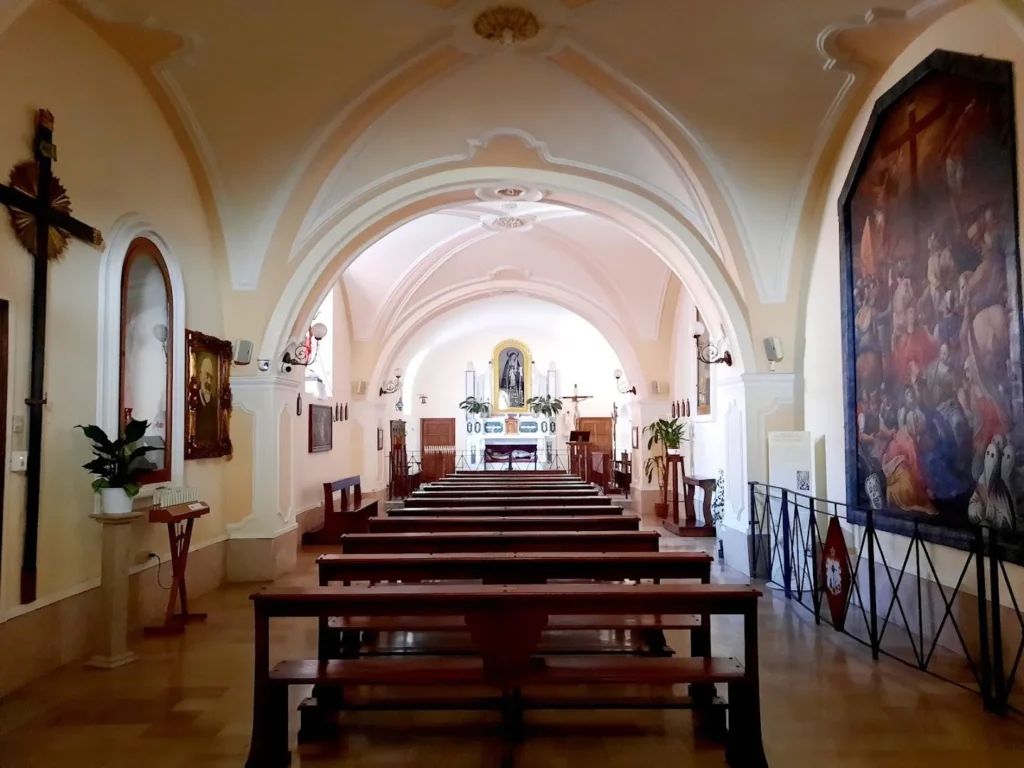
Architectural style: Gothic architecture.
The church is a striking example of Gothic-Angevin architecture. It combines Romanesque and Gothic styles, making it a unique structure with historical and religious significance. Its architecture and the artifacts housed within offer a glimpse into centuries of devotion and artistry.
Facade and Rose Window
The facade of the church presents a gabled design, typical of Romanesque architecture, while a beautifully intricate Gothic portal sits at its center. At the top of this portal, the Angevin coat of arms is prominently displayed, symbolizing the region’s historical connections. Above the portal, a stunning sixteen-ray rose window adds an element of grandeur to the structure. This rose window was rebuilt in 1943 and remains a focal point of the church’s facade. On the side of the building, facing the gardens of Piazza Tribunali, a smaller portal opens, featuring a lamb sculpture above it. This lamb is a traditional Christian symbol, often representing Christ as the Lamb of God.
Interior Design of the Sanctuary
The interior of the sanctuary offers a breath taking blend of architectural grandeur and spiritual depth. The church features a single, wide, and very high nave, which immediately creates a sense of awe. The wooden truss ceiling enhances this sense of space, drawing the eye upward and emphasizing the towering height of the structure. Four single-lancet ogival windows, typical of Gothic architecture, illuminate the space with natural light, creating a serene and contemplative atmosphere. These windows not only allow light to fill the sanctuary but also enhance the spiritual ambiance.
Above the nave, eighteenth-century frescoes depicting the life of Saint Francis of Assisi offer both historical and religious insight, enriching the visitor’s understanding of the saint’s journey and significance. These frescoes are not just works of art, but also a testament to the church’s deep artistic and spiritual heritage.
Along the nave, five eighteenth-century sandstone altars line the walls, each housing wooden statues of beloved saints. On the left side of the nave, the altars are dedicated to Saint Francis of Assisi (1713),
The Crucified Jesus (1600), and Saint Anthony of Padua (1943). On the right side, the altars are dedicated to Ecce Homo (1600) and The Immaculate Conception (1718). These altars serve as focal points for prayer and reflection, honoring the saints they represent. A notable feature within the church is its pulpit, crafted from the ancient sarcophagus of the noble knight Santa, dating back to 1555. This pulpit holds both historical and religious significance, linking the present with the church’s past. The statues of Saint Francis of Assisi and The Immaculate Conception were sculpted by the famous artist Giacomo Colombo, while the statue of Ecce Homo is attributed to Aniello Stellato. These statues, with their intricate craftsmanship, add both beauty and spiritual depth to the sanctuary, drawing worshippers into a deeper sense of reverence and reflection.
The Apse: A Sacred Space of Art and Devotion
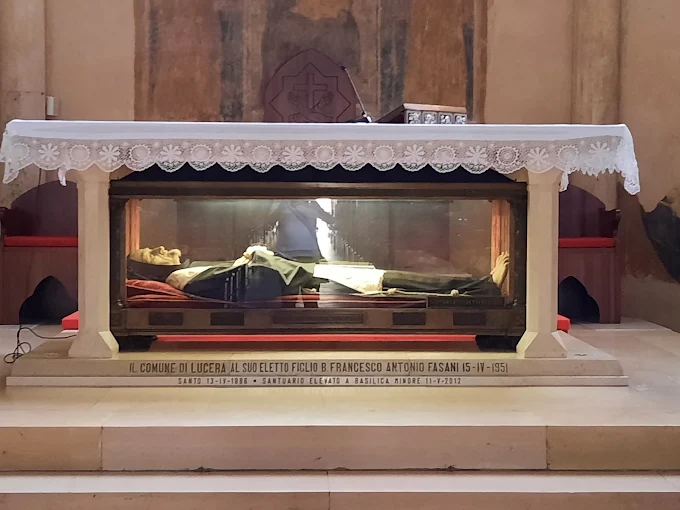
The apse of the church is a captivating and sacred space, set apart from the nave by a grand triumphal arch that stands at an impressive 18 meters high. The arch is constructed from Tiburtina stone, a material that adds both strength and beauty to this architectural feature. The apse itself is designed with a pentagonal plan, a shape that enhances the visual flow of the space, and it is illuminated by three Gothic windows, which not only let in natural light but also contribute to the spiritual atmosphere with their stunning design. These windows are adorned with beautiful frescoes, making them a significant artistic feature of the apse. In the lower register of the apse, the frescoes depict pivotal moments in Christian theology. The first scene portrays a double Crucifixion, which represents the ultimate sacrifice of Christ. Nearby, the Annunciation is shown, where the Archangel Gabriel announces to the Virgin Mary that she will bear the Son of God, a moment of profound religious significance. On the left side, two popes are depicted, adding to the religious and ecclesiastical depth of the scene.
On the right side, a mullioned window in the Gothic style frames a very special Annunciation fresco, which dates back to the 1300s, giving it both historical and spiritual significance. The frescoes adorning the sides of the apse are equally captivating, featuring Saint Catherine of Alexandria, known for her wisdom and martyrdom, Saint Anthony the Abbot, a founder of Christian monasticism, and Saint Margaret of Antioch, who is often depicted in Christian art as a symbol of strength and faith. In the upper register, the frescoes shift focus to the life of Saint Francis of Assisi, with various episodes from his life, highlighting the deep connection of this church to the Franciscan order. These images not only celebrate the saint’s spirituality and miracles but also emphasize the importance of his legacy within the church’s history. At the very center of the apse, beneath an altar from 1942, a bronze urn rests, containing the relics of Saint Francis Antonio Fasani. These relics are preserved in a wax statue, carefully displayed to allow for veneration. This area serves as a profound point of reflection for worshipers, offering a tangible connection to the saint’s memory and fostering an atmosphere of reverence and devotion. The apse, with its combination of art, history, and relics, stands as a powerful focal point within the church, drawing the faithful into a deeper understanding of the Christian faith and the lives of those who shaped it.
Counter-Facade and Artwork
On the counter-façade, two canvases by Girolamo Cenatiempo from the 18th century are displayed. One canvas depicts Saint Gennaro, flanked by Saint Bonaventura and Saint Chiara, while the other illustrates the Madonna of Providence, accompanied by Saint Elizabeth of Hungary and Saint Roba da Viterbo. Beneath the rose window, there is a canvas celebrating the glorification of Saint Francesco Antonio Fasani. Above the side portal and the door leading to the chapel of the Addolorata, two more canvases depict miracles attributed to Saint Francesco Antonio Fasani, which contributed to his beatification. The saint’s worn clothes and the cilice (a penitent’s garment) that he wore are displayed in a glass case, and his original burial place can be found next to the altar dedicated to him.
The Chapel of the Addolorata
Through a small door located next to the altar of Saint Anthony of Padua, one can enter the Chapel of the Addolorata. In this chapel, the statues of the Crucifix, the Dead Christ, and the Sorrowful Virgin are preserved. On the right wall, a large canvas from the end of the 16th century to the beginning of the 17th century depicts the Exaltation of the Cross. In a niche, a wooden statue of Saint Francis Antonio Fasani (1951) is displayed. On the left wall, another niche holds a statue of the Heart of Jesus. The chapel is connected to the rooms of the Archcon fraternity of the Holy Cross, Addolorata, and Holy Trinity, which adds a layer of communal religious significance to the space.
The Convent
Adjacent to the church is the convent of the Conventual Friars Minor. A small door from the sacristy leads into the convent. Most of the convent has now been incorporated into the Lucera District Prison, but part of it remains accessible to the Franciscan community. Within this remaining space are the refectory and the Fasani room, a former portico of the convent cloister. The room contains several paintings, many of which depict Saint Francis Antonio Fasani. On the first floor, the friars have cells where a few still reside. Among these cells is the cell of Saint Francesco Antonio Fasani, which was returned to the friars in 2010 after being held by the penitentiary administration for 144 years.
Feast Day
Feast Day : 29 November
The feast day of Saint Francis Antonio Fasani at the Basilica Sanctuary of Saint Francis Antonio Fasani in Lucera, Italy, is celebrated on November 29th. This day commemorates the saint’s death in 1742, and the occasion is marked with liturgical services, a procession, and a festive atmosphere.
Church Mass Timing
Yet to Update
Church Opening Time:
Monday To Thursday : 8.00 am – 12.00 pm., – 5.00 pm – 8.00 pm.
Friday : 7.00 am – 12.00 pm., – 3.00 pm – 7.00 pm.
Saturday : 7.20 am – 12.20 pm., – 5.00 pm – 8.30 pm.
Sunday : 8.00 am – 12.30 pm., – 5.00 pm – 8.30 pm.
Contact Info
Address:
Basilica Sanctuary of Saint Francis Antonio Fasani
Piazza Tribunali, 71036 Lucera FG, Italy
Phone : +39 338 690 6231
Accommodations
Connectivities
Airway
Basilica Sanctuary of Saint Francis Antonio Fasani, Lucera, Italy, to Foggia Gino Lisa Airport, distance between 25 min (23.7 km) via Strada Statale 17.
Railway
Basilica Sanctuary of Saint Francis Antonio Fasani, Lucera, Italy, to Stazione di Lucera Railway Station, distance between 8 min (2.4 km) via Via Napoleone Battaglia/SP109 and SP109.

